- Home
- M. L. Buchman
Honor Flight
Honor Flight Read online
Honor Flight
an NTSB / military technothriller story (previously published as “Galaxy”)
M. L. Buchman
Sign up for M. L. Buchman’s newsletter today
and receive:
Release News
Free Short Stories
a Free Book
* * *
Get your free book today. Do it now.
free-book.mlbuchman.com
About This Book
(Previously published as Galaxy in the USA Today bestselling anthology Origins of Honor.)
* * *
A C-5 Galaxy, the premier heavy transport jet in the US military, and its secret cargo lie shattered across one of America’s largest military bases: Joint Base Lewis-McChord.
Some say it crashed. Others say domestic terrorism… Or a declaration of war? They need answers and they need them fast.
Miranda Chase, air-crash genius, and high-functioning autistic, and the National Transportation Safety Board’s newest investigator, gets the call. But unraveling the real cause could cost her honor or her life.
1
April 2004
“Mooney Three-five-three-Charlie-Victor, Boeing Tower.”
Miranda was less than a hundred feet in the air after taking off from Boeing Field in South Seattle when the tower called her.
That was unusual.
The final time she typically talked to the tower was when they gave her clearance to proceed onto the active runway and take off. After that, they just wanted you out of their traffic pattern and gone. But that was definitely her airplane’s N-Number.
“Three-Charlie-Victor. Go ahead, Tower.” Though it always bothered her that N-numbers was shortened after the first communication. She’d never met another Three-Charlie-Victor, but she could. And then what might happen? But air traffic control was always about efficiency.
She was on a straight-out departure to the north because the wind had shifted in the six hours since her arrival from the north. The morning breeze had died, and the spring warmth of the early afternoon now beckoned.
Straight out would lead her above Harbor Island and out over Elliott Bay with an amazing view of Seattle to her right. Seventy miles to home on Spieden Island in the San Juans. In her Mooney M201—the fastest production propeller-driven plane when her father had bought it twenty years before—she’d be home in twenty minutes.
“Remain in pattern right. Depart south over the reservoir tower. You are redirected to JBLM.”
“JBLM? Did I hear that correctly, Tower?” Even as she responded, she turned right and raised the landing gear once she came parallel to Boeing’s runway heading south.
Change was unnerving. She supposed that’s why they called it change.
One moment she was in the midst of her planned routine, her visual flight rules path from Boeing Field to Spieden made a clear, easy-to-visualize map for the next twenty minutes of her life. Then there would be putting the plane away; and it wasn’t too late for planting her cabbage and broccoli starts.
But her planned routine was now changed without any warning.
“Roger that. Joint Base Lewis-McChord,” the tower repeated clearly.
“But I don’t have clearance to land there.” JBLM was a massive military base. Nor did she have the charts. She checked in her nav computer, but all it showed on her screen was “Restricted Airspace” and the most basic information about the field.
Flaps from takeoff to cruise.
The Mooney was fast enough she’d be there in under fifteen minutes. Well under.
“Contact their tower on 119.325.”
She punched the frequency into her second radio as they read it out. “Roger that.”
“And, Miranda?”
“Yes, Tower?”
“Thanks for all your help with the crash.”
“You’re welcome,” she supposed was the right response.
She never knew for certain.
Mom had taught her that when in doubt, “Thank you” and “You’re welcome” were both reasonable responses. She’d been right. They generally worked well—as the second option had appeared to this time.
She came abreast of the abandoned water tower that hundreds of pilots each day used as their turning point and headed forty-five degrees left out of Boeing’s flight pattern. She supposed it wasn’t abandoned in actuality, as so many pilots depended on it even if the water department didn’t.
She’d been called to Boeing Field for her first-ever solo accident investigation as an IIC—Investigator-in-Charge—for the National Transportation Safety Board. Technically, she was a specialist in commercial aviation rather than the small planes of general aviation. But dispatch had said, “Well, you’re handy. You’re the only one in the Seattle area today.”
With the Mooney, she’d arrived from her island in under half an hour. Boeing field had still been closed to all traffic, but when they’d found out who she was, they’d given her special clearance to land. The runway was so long—a major testing and final configuration center for the Boeing passenger jets—that she’d been given clearance for a midfield landing.
She’d stayed high enough to not disturb the site of her pending investigation, which dangled near the start of the runway.
It was a curiously intact site, though she’d had to wait almost three more hours to access it.
A set of high-tension power lines hung well north of the runway. They were clearly marked with bright red balls clipped on at consistent intervals. Also, they were well below the proper flightpath.
Furthermore, Boeing Field had glideslope indicator lights that would have shone red-over-red indicating the pilot was too low.
Yet somehow, the little Cessna 152’s pilot had managed to snag a wheel in the thick power lines. Rather than tearing down the line and probably killing himself, he was left to dangle over fifty feet in the air, upside-down for four hours. The power company had finally shut down the feed to much of the area—including the Boeing factory hangars. Then they had to wait for a crane big enough to retrieve the pilot and then the half-ton plane from where it hung tangled in the power lines.
Miranda supposed the plane remaining hooked to the wire was a testament to Cessna’s robust landing gear designs.
By the time he was down, she had all of the interviews completed: tower, plane rental, and eyewitnesses (of which there had been seven). She’d secured a copy of the tower recordings as well as the air traffic control readouts.
Once it was down, she’d inspected the plane for faults—at length—which had greatly upset the pilot who she’d made wait.
People were the strangest element of all to her. Why didn’t they ever understand that she was ruling out all other factors, aside from pilot error, before their discussion?
Apparently, this pilot didn’t either.
He seemed very upset when she tried to question him.
That part hadn’t gone well. But she’d been able to have the FAA reopen airfield operations quickly—after she’d taken a flight herself to prove that the glideslope indicators were working properly, and it was the pilot who had malfunctioned.
It had been his fault and her report would say so.
When she communicated that, he became even more upset and one of the airport security personnel had to restrain him.
It made no sense.
Her review had been impartial. But she now understood why investigators were told to never disclose a report’s conclusions until it had been fully reviewed by the NTSB. She wouldn’t forget again.
In fact, she made a mental note to fully reread the entire legal background of the NTSB this week—starting with Section 5 of Public Law 89-670 which established the Safety Board in 1967.
She’d always known that people
would be the hardest part of the crash for her, but it was too small an incident to require assembling a team. So, she needed to see what aspects of the law could help her in the future.
But that was for later. Instead she would focus on whatever reason she was being called to JBLM.
“JBLM Tower, this is Mooney Three-five-three-Charlie-Victor.”
“This is Gray Tower. Go ahead.”
“Three-Charlie-Victor inbound from Boeing. I was told to contact JBLM Tower on this frequency.”
“There is no JBLM Tower anymore. State purpose.”
“What do you mean there isn’t…”
That’s when she saw the column of smoke. It was right where the McChord Field should be—south-southwest at thirty miles.
It wasn’t a small fire. Great billows of black smoke were blooming upward. Even as she watched, there was a fresh explosion and fireball on the ground. More black smoke gouted upward.
“We’re busy here, Three-Charlie-Victor. Stay clear of this area. This is not a civilian channel.”
But she’d been told to call them. Until she knew why, she couldn’t really think of what to do next.
Maybe it was because her call hadn’t been properly addressed.
“Gray Tower, this is Mooney Three-five-three-Charlie-Victor.”
There was an audible snarl over the air. “What part of leave didn’t you understand, Three-C-V?” Which was a wholly improper shortening of her callsign.
“This is NTSB I-I-C Miranda Chase, reporting as requested.”
“NTSB? What the— Hang on.” It was a good thing he’d stopped himself. The Federal Communications Commission frowned on obscenity per Title 47, Part 73. Perhaps military rules were different. More to add to her reading list.
Five seconds later he was back, and being very polite. “McChord Field is closed at this time… We’ll vector you to Gray Army Airfield… Be careful in the pattern as we’re handling a great deal of overload traffic… A helicopter will be waiting to take you to McChord.” She could just hear the voice in the background stating instructions for the radio operator to transmit. It seemed an inefficient methodology, but she supposed that it worked for them.
“Roger. Three-Charlie-Victor awaiting direction.”
And as he guided her into restricted airspace, Miranda couldn’t take her eyes off the conflagration at McChord.
Her first-ever time as Investigator-in-Charge had been one of the very smallest production airplanes built, caught in a power line.
She spotted the massive T of the empennage that had broken free from the McChord crash—as so often happened with the tail section in major accidents.
Six stories high and nearly twice the width of her Mooney’s wingspan, it was the T-tail of a C-5 Galaxy jet transport—the largest plane in the entire US military.
It appeared to be the only part that was intact.
2
The heat was strong, even through the helicopter’s windshield.
The fire still blazed hot despite the vast array of fire equipment gathered around it and spraying water and foam.
Miranda wished that they only used the latter. Water damaged so much of the evidence she would need to make a determination.
The helicopter pilot had wanted to fly her around the perimeter of the wreck, but that wasn’t how she worked.
Terence, her mentor at the NTSB Training Center, had helped her formulate a methodology that allowed her to approach a crash in a layered fashion that didn’t overwhelm her. Most investigators could deal with the chaos of multiple factors, but she never understood how they did that.
When it finally became clear that the pilot was going to fly around the whole wreck anyway, she’d shut her eyes and waited. She could feel the lateral forces acting on the helicopter and her body as he circled. Her eyes remained tightly closed until the forces neutralized and she could sense the slight weightlessness of a descent toward a final landing.
“You’re a strange lady, Lady,” the pilot said as he set the small OH-58 Kiowa helicopter down on its skids well clear of the fire.
“I know.” Every kid she’d ever met growing up and every adult now that she was grown had echoed that sentiment.
Almost everyone.
Her parents never had. Nor her governess, who’d become her guardian after her parents’ deaths in an air crash. Nor Terence her mentor. But the examination board members of the NTSB’s newly formed Training Center certainly had, even as they’d passed her with the highest marks of their first graduating class.
Miranda climbed down and the helo departed.
Should she be surprised that she was suddenly alone in the middle of one of the nation’s largest military bases without an escort? She wasn’t a soldier. She also wasn’t an airwoman. Were there any Navy here at JBLM? Because she also wasn’t a sailor or a Marine. But she didn’t think so. So it would be okay with them that she wasn’t a sailor or a Marine without an escort in a secure area. That was some comfort.
She turned her back on the fire as she pulled on her custom-tailored NTSB vest—even the small-size standard-issue ones fell off her shoulders and hung halfway to her knees. No one designed for a woman only five-foot-four.
The six-inch fluorescent-yellow letters across her back would announce her purpose here.
Then she began checking each of her pockets carefully to make sure everything was in its place: notepads, recorders, measuring tapes, and all the other tools of her trade. It was. Then she hung her NTSB badge prominently around her neck.
She was ready.
With her back still to the fire, she pulled out a weather meter and checked the readings.
The fire was playing havoc with the winds. She hated to do it, but could only record “light and variable” with any certainty. She assumed that the tower would have more accurate records…except hadn’t they said there wasn’t a tower anymore?
She looked around but didn’t see one.
There was something in the heart of the fire that might be the stump of one, but she couldn’t be sure.
Nothing in the NTSB Training Center’s curriculum had mentioned what to do if there was no control tower. Actually, they did, for an uncontrolled airfield. But for major airports there were supposed to be control towers from which to gather essential information.
The fire was hot enough that even at this distance the air thermometer recorded a seventeen-degree Fahrenheit difference in the open versus shielded by her body from direct exposure.
How was she supposed to make sense of this? Even the simplest task was so difficult. It took her three tries to slip the sensor back in its pocket. And the notation in her notebook was barely legible—it was so bad that she blacked it out completely and rewrote it in careful block print.
Once she had completed that, she knew what she had to do.
It was time to implement Terrence’s made-for-Miranda layered strategy.
Weather.
Not quantifiable beyond “Clear sky. Winds light and variable.”
Terrain.
McChord Field was a big flat airfield designed for heavily laden warplanes to land. No mountain they might have run into or had to avoid at the last moment. “Terrain clear. Pavement dry.”
Debris.
The next layer was to circle the site of the wreck and locate the outermost extent of the debris field. She had the little green perimeter marker flags in her backpack. She had her camera and drawing materials in her vest so that she could create a map of the outline.
But there was only one of her.
And there was between four hundred and sixty thousand pounds (empty) and nine hundred and twenty thousand pounds (maximum takeoff weight) of airplane spread over more than a mile of runway. And a tower.
Even as she watched, the firefighting Striker trucks were running over the debris and destroying even more evidence.
“Who the hell are you and what are you doing here?” someone shouted at her.
Miranda sighed.
She
had no idea.
3
“Major, show some respect,” a general stood close beside the man who had addressed her.
“Yes, sir,” Major Charleston—by his oak leaf insignia and the name stitched over his right breast pocket—didn’t sound happy about it. He was tall, which made it easier not to meet at his eyes.
Instead she focused on the stitching of his name—heavy black embroidery stitched directly onto the pocket of his camouflage uniform. The left pocket had “U.S. Air Force” stitched just below a patch depicting a pair of wings.
He was a pilot.
“Your insignia are brown rather than gold. Is that so that they don’t reflect light?”
He tried to look down at his collar points, but his neck didn’t bend that way. “Yes. No. Hell if I know. Look, Lady—”
“Major,” the general quelled him with that single word. “I called in the order for an NTSB investigator to be requested and if you look at her badge, that’s what she is.”
“I’m the Air Force investigator. I don’t need anyone’s help.”
“You certainly arrived fast enough, Major. I was told the closest USAF crash investigator was in Nellis. That’s why I called the NTSB.”
“I was passing through, returning from Alaska. Besides, she’s twelve,” the major protested.
Miranda knew she was young. And being five-four and having Mom’s slender build added to how inaccurately people perceived her age without ever thinking to ask. Besides, she was not twelve. That was inaccurate by sixty-seven percent.
Terence had taught her what to say. She always thought it sounded like bragging, but he’d insisted that she learn it by rote.
“I have dual masters from the University of Washington in Materials and Aerospace Engineering. Top of my class. I graduated from the NTSB Training Center at the top of their first-ever class. And I’ve been studying airplane incidents since I was thirteen—including reading every NTSB Aviation Accident Report ever published.”

 White Top
White Top Thunderbolt
Thunderbolt Storm's Gift
Storm's Gift The Complete Delta Force Shooters
The Complete Delta Force Shooters At the Quietest Word (Shadowforce: Psi Book 2)
At the Quietest Word (Shadowforce: Psi Book 2) At the Slightest Sound
At the Slightest Sound Dilya's Christmas Challenge
Dilya's Christmas Challenge Raider
Raider Havoc
Havoc Carrying the Heart's Load
Carrying the Heart's Load Flying Beyond the Bar
Flying Beyond the Bar Firelights of Christmas
Firelights of Christmas Where Dreams Are Well Done
Where Dreams Are Well Done Nathan's Big Sky
Nathan's Big Sky Heart of a Russian Bear Dog
Heart of a Russian Bear Dog Drone: an NTSB / military technothriller (Miranda Chase Book 1)
Drone: an NTSB / military technothriller (Miranda Chase Book 1) Flower of Destiny
Flower of Destiny Drone
Drone Ghostrider: an NTSB-military technothriller (Miranda Chase Book 4)
Ghostrider: an NTSB-military technothriller (Miranda Chase Book 4) Wild Fire
Wild Fire Team Black Sheep
Team Black Sheep The Complete Delta Force Warriors
The Complete Delta Force Warriors At the Quietest Word
At the Quietest Word At the Merest Glance
At the Merest Glance Havoc: a political technothriller (Miranda Chase Book 7)
Havoc: a political technothriller (Miranda Chase Book 7) White Top: a political technothriller (Miranda Chase Book 8)
White Top: a political technothriller (Miranda Chase Book 8) Between Shadow and Soul
Between Shadow and Soul Island Christmas
Island Christmas Survive Until the Final Scene
Survive Until the Final Scene Midnight Trust
Midnight Trust Return to Eagle Cove
Return to Eagle Cove Where Dreams Reside
Where Dreams Reside Honor Flight
Honor Flight Where Dreams Are Sewn
Where Dreams Are Sewn The Complete Hotshots
The Complete Hotshots Condor
Condor I Own the Dawn
I Own the Dawn Chinook
Chinook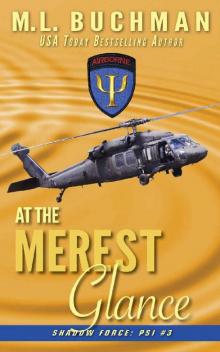 At the Merest Glance: a military paranormal romance (Shadowforce: Psi Book 3)
At the Merest Glance: a military paranormal romance (Shadowforce: Psi Book 3)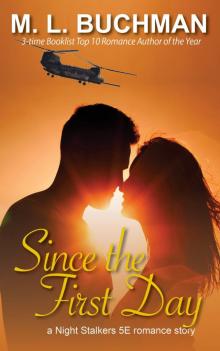 Since the First Day
Since the First Day Thunderbolt: an NTSB / military technothriller (Miranda Chase Book 2)
Thunderbolt: an NTSB / military technothriller (Miranda Chase Book 2) For Her Dark Eyes Only
For Her Dark Eyes Only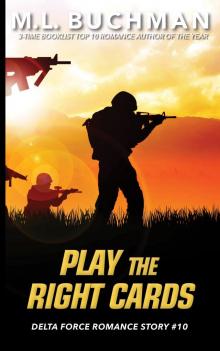 Play the Right Cards
Play the Right Cards Lost Love Found in Eagle Cove
Lost Love Found in Eagle Cove Big Sky Ever After: a Montana Romance Duet
Big Sky Ever After: a Montana Romance Duet Keepsake for Eagle Cove
Keepsake for Eagle Cove At the Clearest Sensation
At the Clearest Sensation The Ides of Matt 2015
The Ides of Matt 2015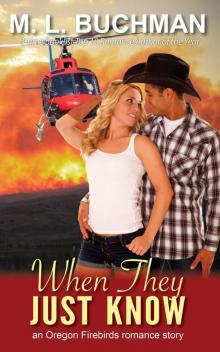 When They Just Know
When They Just Know Cave Rescue Courtship
Cave Rescue Courtship Wildfire at Dawn
Wildfire at Dawn Dawn Flight
Dawn Flight Blaze Atop Swallow Hill Lookout
Blaze Atop Swallow Hill Lookout The Sword of Io
The Sword of Io Christmas at Steel Beach
Christmas at Steel Beach Heart's Refuge
Heart's Refuge By Break of Day (The Night Stalkers)
By Break of Day (The Night Stalkers) Kee's Wedding
Kee's Wedding Just Shy of a Dream
Just Shy of a Dream Path of Love
Path of Love Ghost of Willow's Past
Ghost of Willow's Past Flash of Fire
Flash of Fire Target of the Heart
Target of the Heart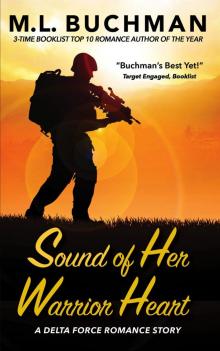 Sound of Her Warrior Heart
Sound of Her Warrior Heart Target of Mine: The Night Stalkers 5E (Titan World Book 2)
Target of Mine: The Night Stalkers 5E (Titan World Book 2) The Complete Where Dreams
The Complete Where Dreams Target of One's Own
Target of One's Own For All Their Days
For All Their Days Pure Heat
Pure Heat Love's Second Chance
Love's Second Chance Target Engaged
Target Engaged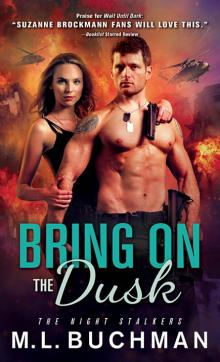 Bring On the Dusk
Bring On the Dusk Wait Until Dark (The Night Stalkers)
Wait Until Dark (The Night Stalkers) Big Sky, Loyal Heart
Big Sky, Loyal Heart Welcome at Henderson's Ranch
Welcome at Henderson's Ranch Damien's Christmas
Damien's Christmas Flight to Fight
Flight to Fight Nara
Nara Looking for the Fire
Looking for the Fire Love Behind the Lines
Love Behind the Lines Peter's Christmas
Peter's Christmas In the Weeds
In the Weeds Christmas at Henderson's Ranch
Christmas at Henderson's Ranch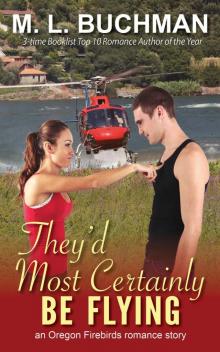 They'd Most Certainly Be Flying
They'd Most Certainly Be Flying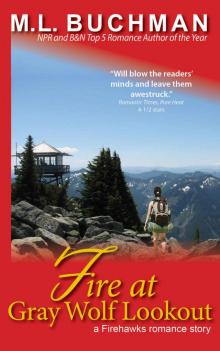 Fire at Gray Wolf Lookout (Firehawks Book 8)
Fire at Gray Wolf Lookout (Firehawks Book 8) Wildfire on the Skagit (Firehawks Book 9)
Wildfire on the Skagit (Firehawks Book 9) A Hotshot Christmas
A Hotshot Christmas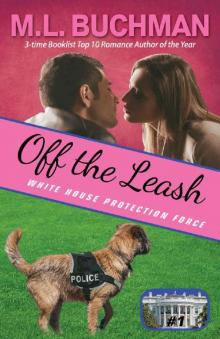 Off the Leash
Off the Leash Where Dreams Books 1-3
Where Dreams Books 1-3 Guardian of the Heart
Guardian of the Heart The Ides of Matt 2017
The Ides of Matt 2017 Where Dreams Unfold
Where Dreams Unfold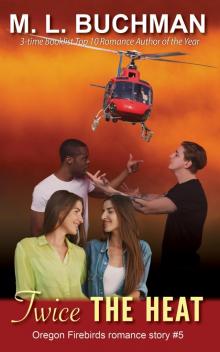 Twice the Heat
Twice the Heat Wild Justice (Delta Force Book 3)
Wild Justice (Delta Force Book 3) Flying Over the Waves
Flying Over the Waves Love in the Drop Zone
Love in the Drop Zone I Own the Dawn: The Night Stalkers
I Own the Dawn: The Night Stalkers What the Heart Holds Safe (Delta Force Book 4)
What the Heart Holds Safe (Delta Force Book 4) The Christmas Lights Objective
The Christmas Lights Objective Road to the Fire's Heart
Road to the Fire's Heart Night Rescue
Night Rescue Delta Mission: Operation Rudolph
Delta Mission: Operation Rudolph Full Blaze
Full Blaze Night Is Mine
Night Is Mine Lightning Strike to the Heart
Lightning Strike to the Heart Beale's Hawk Down
Beale's Hawk Down Circle 'Round
Circle 'Round Cookbook from Hell Reheated
Cookbook from Hell Reheated Zachary's Christmas
Zachary's Christmas Reaching Out at Henderson's Ranch
Reaching Out at Henderson's Ranch Fire Light Fire Bright
Fire Light Fire Bright The Ides of Matt 2016
The Ides of Matt 2016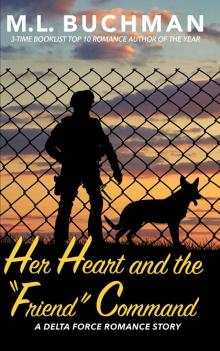 Her Heart and the Friend Command
Her Heart and the Friend Command On Your Mark
On Your Mark Swap Out!
Swap Out! Heart of the Cotswolds: England
Heart of the Cotswolds: England The Phoenix Agency_The Sum Is Greater
The Phoenix Agency_The Sum Is Greater Wildfire at Larch Creek
Wildfire at Larch Creek Target Lock On Love
Target Lock On Love Second Chance Rescue
Second Chance Rescue Where Dreams Are Written
Where Dreams Are Written First Day, Every Day
First Day, Every Day Christmas at Peleliu Cove
Christmas at Peleliu Cove Heart Strike
Heart Strike Man the Guns, My Mate
Man the Guns, My Mate Emily's Wedding
Emily's Wedding Daniel's Christmas
Daniel's Christmas Frank's Independence Day
Frank's Independence Day The Phoenix Agency: The Sum Is Greater (Kindle Worlds Novella)
The Phoenix Agency: The Sum Is Greater (Kindle Worlds Novella) Roy's Independence Day
Roy's Independence Day